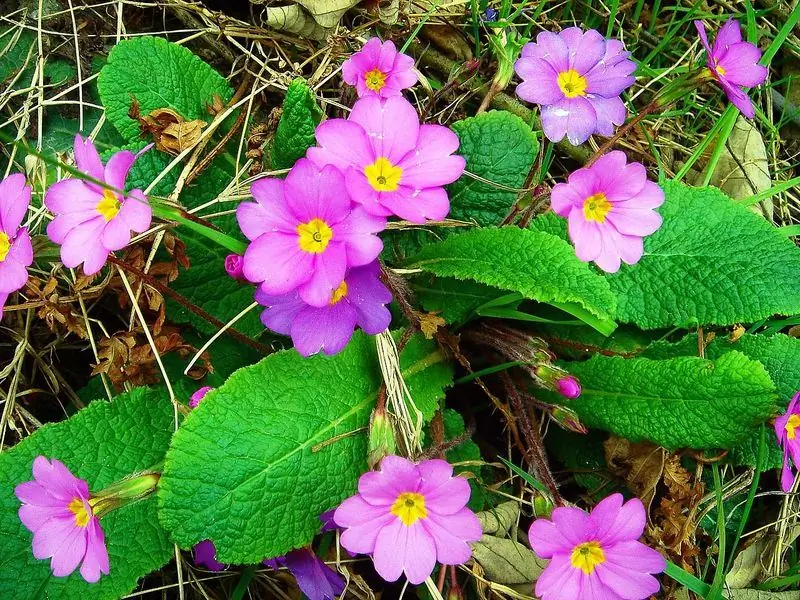
Table of contents:
- Author Bailey Albertson [email protected].
- Public 2023-12-17 12:53.
- Last modified 2025-06-01 07:32.
What flowers can be planted in the shade: beautiful annuals and perennials
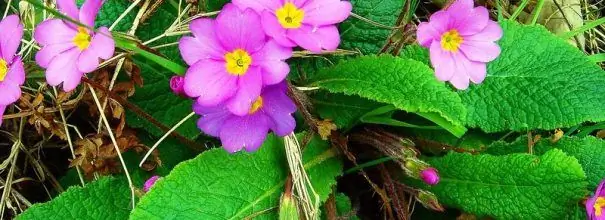
Most plants need sunlight for at least a few hours a day for good growth and flowering, but some can grow and bloom successfully even in fairly thick shade. The assortment of shade-tolerant species among perennials is especially great.
Content
-
1 Plants are shade-loving and shade-tolerant
-
1.1 Shade-loving and shade-tolerant decorative perennials
- 1.1.1 The hellebore
- 1.1.2 Galanthus (snowdrop)
- 1.1.3 Liver
- 1.1.4 Siberian Proleska
- 1.1.5 Badan
- 1.1.6 Brunner
- 1.1.7 Primula (primrose)
- 1.1.8 Periwinkle
- 1.1.9 Spotted verbeynik
- 1.1.10 Lakonos
- 1.1.11 Astilba
- 1.1.12 Host
- 1.1.13 Rogers
- 1.1.14 Buzulnik
- 1.1.15 Bone Stem
-
1.2 Shade-tolerant decorative annuals
- 1.2.1 Lobelia
- 1.2.2 Lipstick (mimulus)
- 1.2.3 Nemophila
- 1.2.4 Marigolds (tagetes)
- 1.2.5 Viscaria (celestial rose resin)
- 1.2.6 Balsam
- 1.2.7 Brovallia
- 1.2.8 Nasturtium
- 1.2.9 Kobei
- 1.2.10 Snapdragon (antirrinum)
- 1.2.11 Fragrant mignonette
- 1.2.12 Violet Pansies
- 1.2.13 Forget-me-not
- 1.2.14 Mirabilis
- 1.2.15 Ever-flowering begonia
-
Shade-loving and shade-tolerant plants
To choose the right flowers for a shady area, you need to know the difference between shade-loving and shade-tolerant species:
- Shade-loving plants in strong shade feel much better than in open sunny places. There are very few such flowers: hellebore, liverwort, galanthus, hosta.
- Shade-tolerant species can withstand partial shade, but many of them bloom less in the shade than in sunny places. Only some species grow and bloom equally well in any light: badan, periwinkle, Siberian blueberry.
- The intermediate group is penumbra plants. In a continuous shade, they do not have enough light, but they do not like direct sunlight, especially at noon hours. Such plants are best suited for diffused light under trees with a thin crown. This type includes primrose, brunner, astilba, rogers.
Shade-loving and shade-tolerant decorative perennials
There are a lot of shade-tolerant perennials. There are also shade-loving forest species among them.
Hellebore
The hellebore is a shade-loving perennial up to 40 cm high with red, white or green flowers. Flowering in the south occurs in December - February, in the middle lane - in April - May.
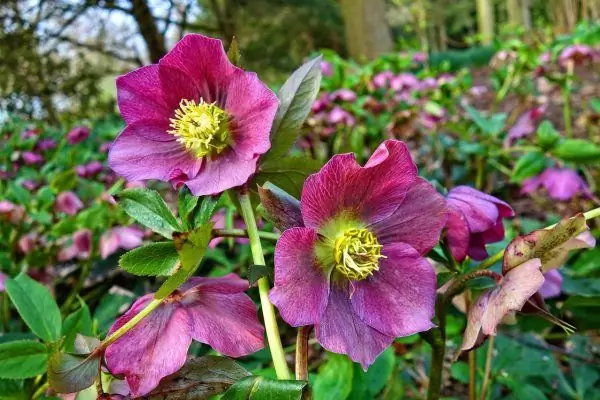
The hellebore is called the Christmas rose in Europe.
Galanthus (snowdrop)
Galanthus is one of the few bulbous plants that prefer shading. White snowdrop flowers appear in the south in January - March, in the middle lane - in April - May. Plant height up to 15 cm.
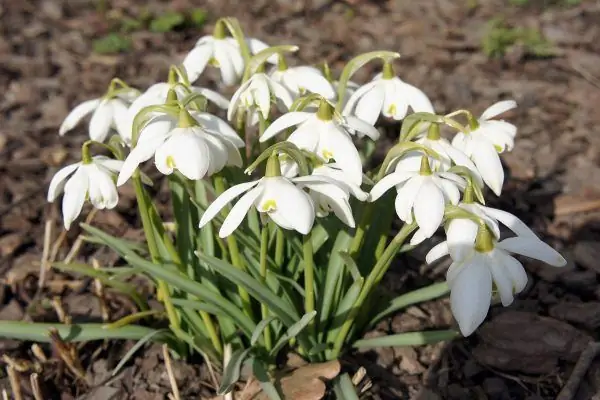
Galanthus is one of the few bulbous plants that prefer shading
Liverwort
The liverwort is a winter-hardy shade-loving plant up to 20 cm high, blooming in April - May. Garden varieties have blue, white or pink flowers.
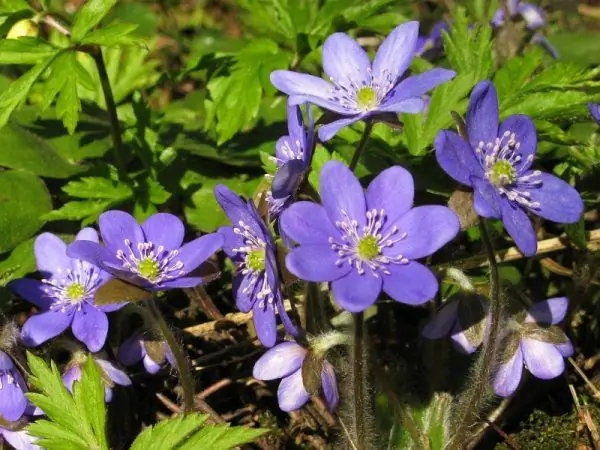
Liverwort - the spring flower of the northern forests
Siberian Proleska
Proleska is a frost-hardy bulbous plant that grows well in any light and on any soil, except swampy soil. In April - May, it blooms with blue or white flowers, plant height up to 15-20 cm.
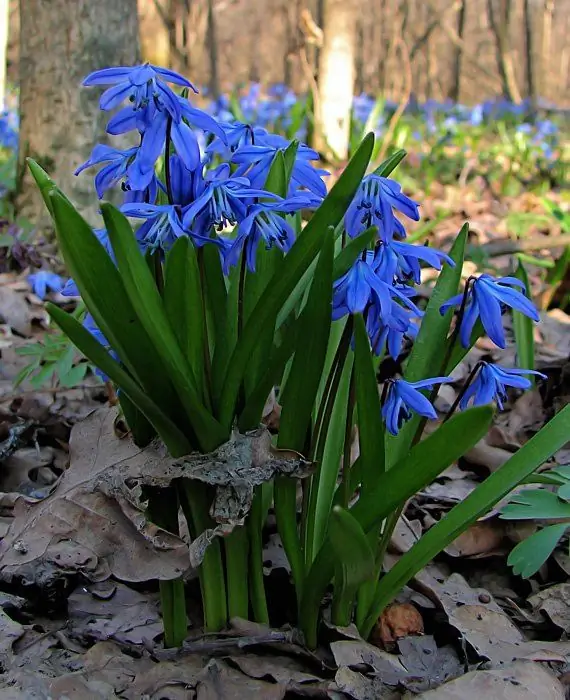
Siberian beetle is winter-hardy and unpretentious
Badan
Badan is a relatively drought-resistant and very frost-resistant perennial up to 40-60 cm high with beautiful rounded leaves. Pink flowers appear in May. Badan grows well in any light.
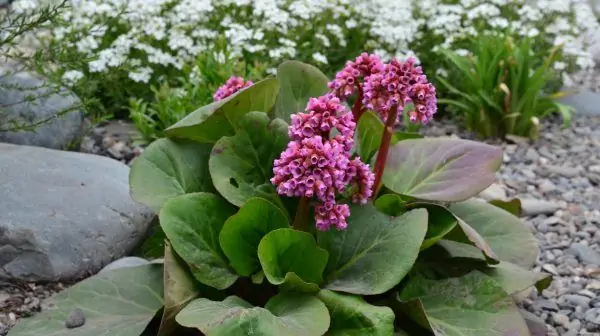
Badan is a hardy plant with beautiful flowers and leaves
Brunner
Brunner blue flowers on peduncles up to 50-60 cm in height bloom in May. Brunner is winter-hardy, prefers partial shade.
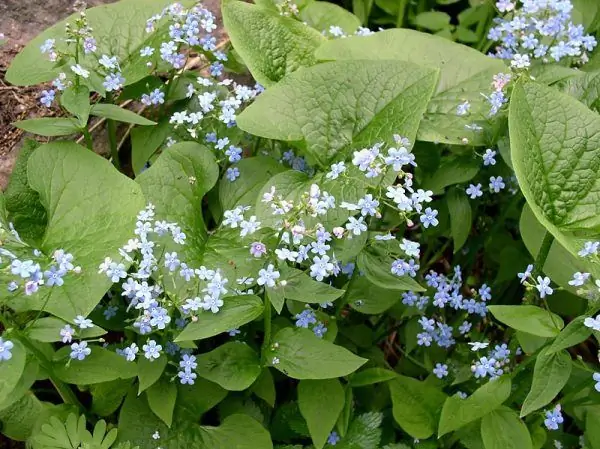
Brunner is a long-term relative of forget-me-not
Primula (primrose)
Primroses bloom in April - May with white, yellow, red, lilac flowers. Plant height up to 20-25 cm. All primroses prefer partial shade and require regular watering.
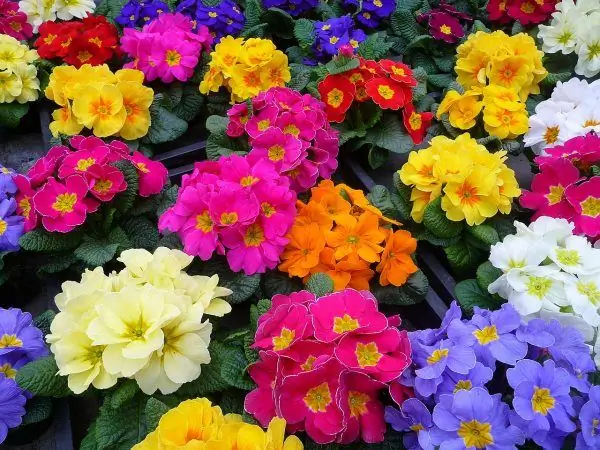
Multicolored primroses bloom in April - May
Periwinkle
Periwinkle is a creeping evergreen. Violet-blue flowers on peduncles up to 20 cm in height appear at the end of May. Periwinkle grows well in any light and is very drought tolerant. In the central and northern regions, he successfully winters under the snow.
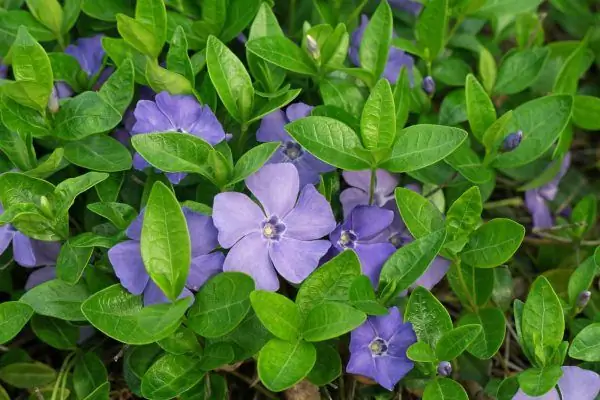
Evergreen periwinkle is shade and drought tolerant
Verbeynik point
Verbeynik grows up to 50-60 cm in height and blooms in June-July with bright yellow flowers. It is winter-hardy, blooms well in the shade, but grows much more slowly than in the sun.
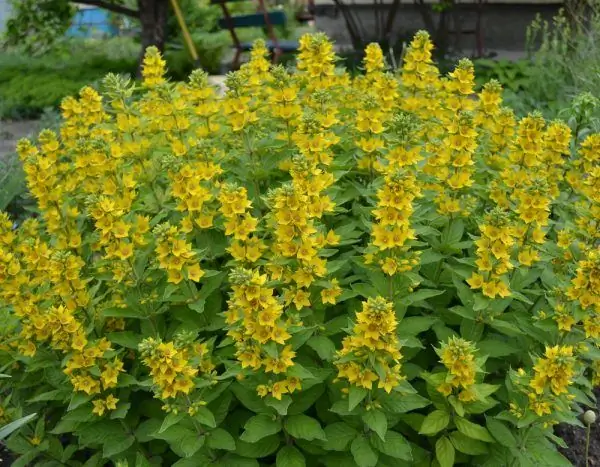
Spotted loosestrife blooms profusely in the sun and in the shade
Lakonos
Lakonos grows up to 2 m in height and blooms in June-July in clusters of white flowers. Its large leaves in a sunny place in the heat wilt even when watering, so it is better to plant in partial shade or where the sun is only in the morning and evening.
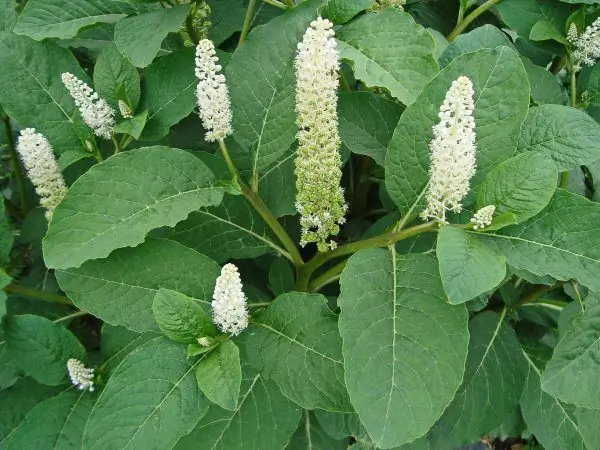
Lakonos is a spectacular plant up to 2 meters high
Astilba
Astilba is an elegant perennial with a height of 20 to 100 cm, depending on the variety. White, red, pink, lilac inflorescences appear in July - August. Astilba prefers partial shade, needs regular watering.
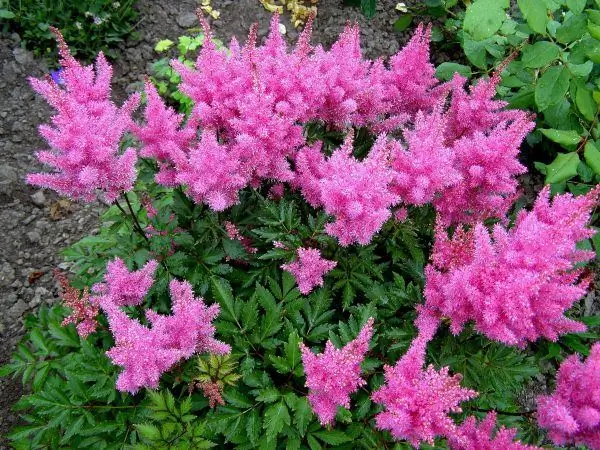
Astilba is a graceful perennial with bright flowers and carved leaves
Hosta
Hosta is a shade-loving plant with luxurious leaves. There are varieties with green, bluish, white-striped foliage. Lilac or white flowers on peduncles up to 1 m in height appear in August.
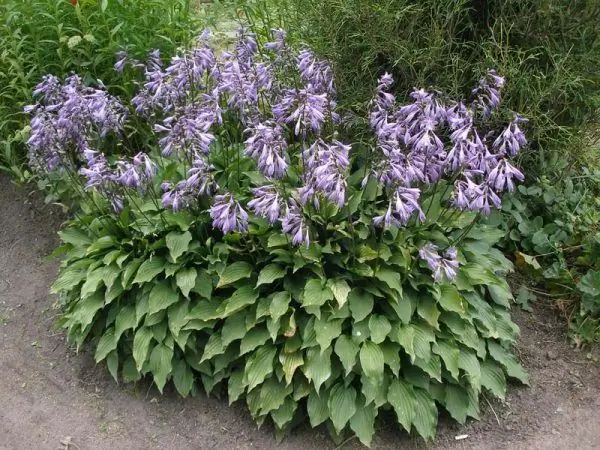
The hosts have beautiful flowers and leaves
Rogersia
Rogersia grows up to 100-150 cm in height, blooms in July-August with white or pinkish flowers. Large leaves are very showy. Rogersia prefers partial shade and is afraid of spring frosts.
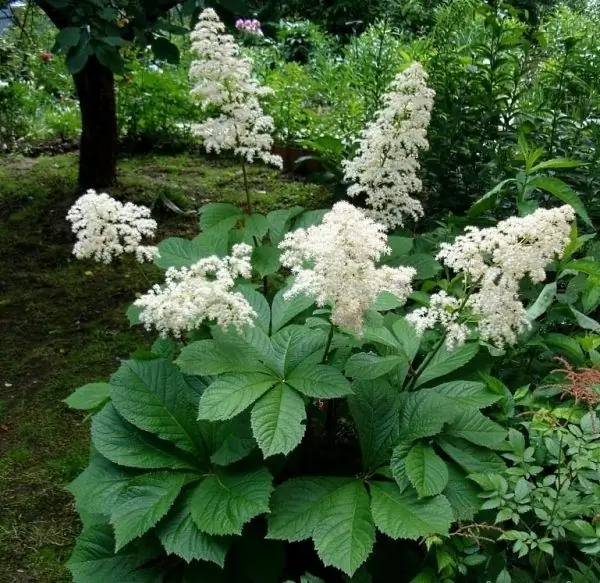
Rogersia is a large plant with showy leaves and inflorescences
Buzulnik
Buzulnik is a winter-hardy plant up to 1.5-2 m high. There are species with rounded and carved leaves. Yellow inflorescences appear in July - August. Buzulniki should be planted in partial shade so that the leaves do not wilt from the sun in the heat.
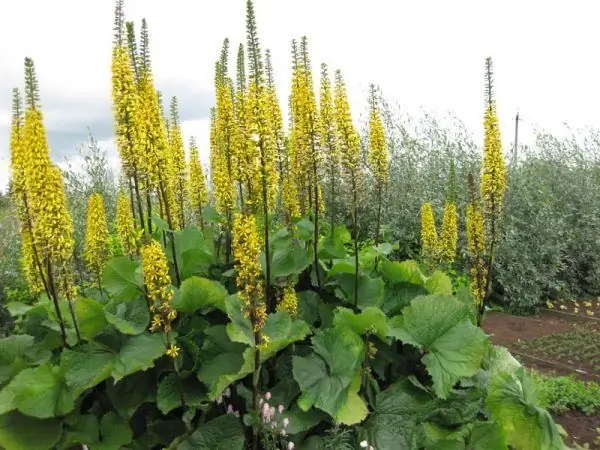
Buzulnik is a winter-hardy plant with yellow inflorescences up to 2 meters high
Boneset
Bone sap grows well in partial shade, grows up to 1.5-2 m in height. It blooms in August with pink-lilac inflorescences.
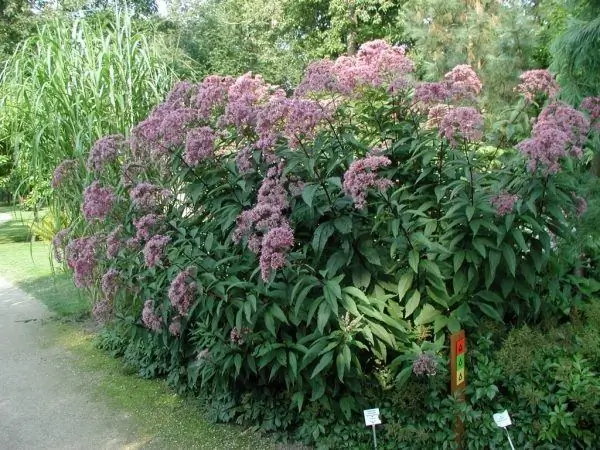
Bristlecone is a large perennial that blooms in late summer
From this list, in my garden near Kazan, they successfully grow, bloom every year and winter safely without shelter: blueberry, berry, brunner, several species of primroses, periwinkle, loosestrife, lakonos, astilba, hosts of different varieties.
Shade-tolerant decorative annuals
Among the annuals, there are no truly shade-loving species that prefer to grow in dense shade, but there are a few shade-tolerant ones that put up with shading for several hours a day or light scattered partial shade under the crowns of trees
Lobelia
Lobelia grows up to 15 cm in height, blooms with blue flowers from July to September, suffers partial shade, almost without reducing the flowering intensity. Sowing seeds for seedlings in February - March.
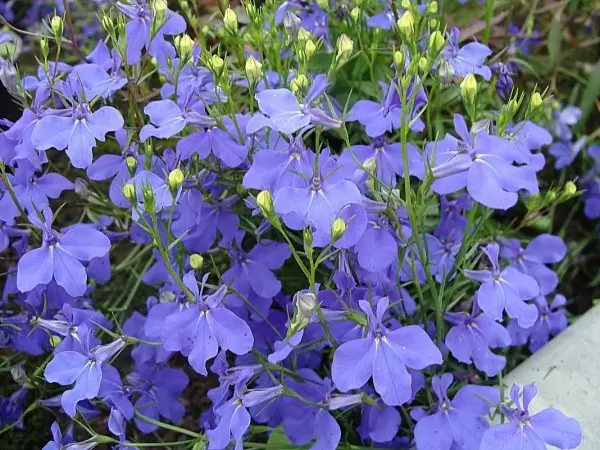
Lobelia is a low-growing plant with blue flowers
Lipastic (mimulus)
Gubastic blooms well in partial shade, very hygrophilous, reaches 20-40 cm in height. The flowers are yellow, red, variegated. Bloom from June to September. Sowing seedlings in early April or mid-May directly into the ground to a permanent place.
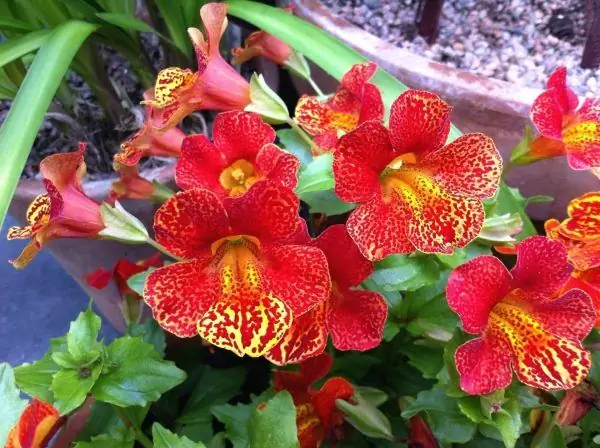
The moisture-loving lipstick has bright motley flowers
Nemophila
Nemophila does not exceed 15 cm in height, suffers partial shade. When sown in the ground in early May, it blooms with white-blue flowers from early July to autumn.
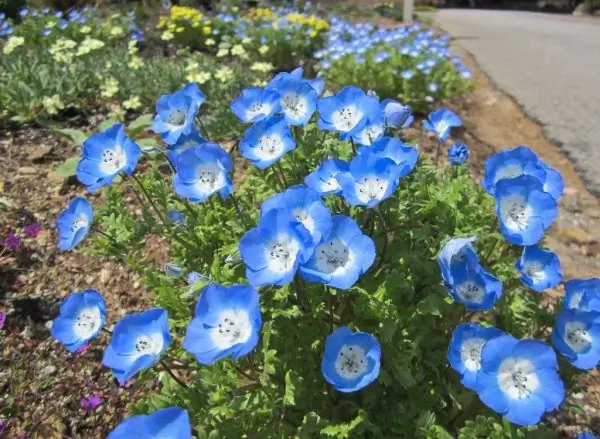
Light-loving nemophila tolerates light partial shade
Marigolds (tagetes)
Different varieties of marigolds reach from 20 to 80 cm in height, bloom with yellow or orange flowers from late June until autumn frosts. They prefer the sun, but tolerate partial shade. Seeds can be sown directly to a permanent place from mid-May.
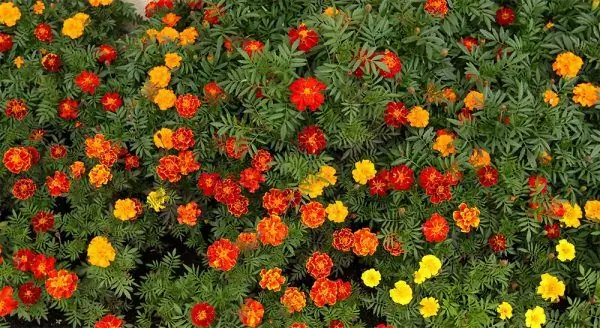
Marigolds are an unpretentious annual with a pleasant spicy aroma of flowers and leaves
Viscaria (heavenly rose resin)
Viscaria grows up to 20-30 cm in height. She loves the sun, but withstands light shading. The flowers are blue, white, pink, lilac. Sowing outdoors in early May, flowering from June to September.

Viscaria can bloom in partial shade
Balsam
Balsam is a moisture-loving plant up to 60-70 cm in height with white, pink, purple flowers. In the sun it has to be constantly watered, so it is better to plant in light partial shade. Bloom from July to frost. Sowing in April for seedlings or at the end of May in open ground.
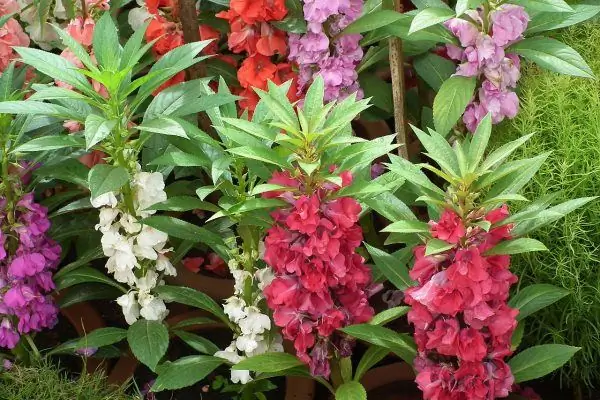
It is better to plant moisture-loving balsam in slightly shaded places.
Brovallia
Brovallia grows up to 30-50 cm in height, blooms with blue or white flowers from July until frost. It does not tolerate drying out of the soil, so it is better to plant it in partial shade. Sowing seedlings in early April or permanently in early May.
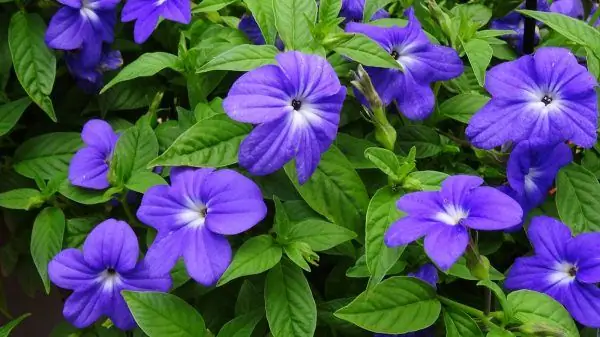
Brovallia does not tolerate drying out of the soil
Nasturtium
Photophilous nasturtium can grow in shade, but it blooms very weakly. The flowers are yellow, orange, red, bloom from July until frost. There are bush varieties 20-30 cm high and climbing up to 2 m. Sowing in open ground at the end of May.
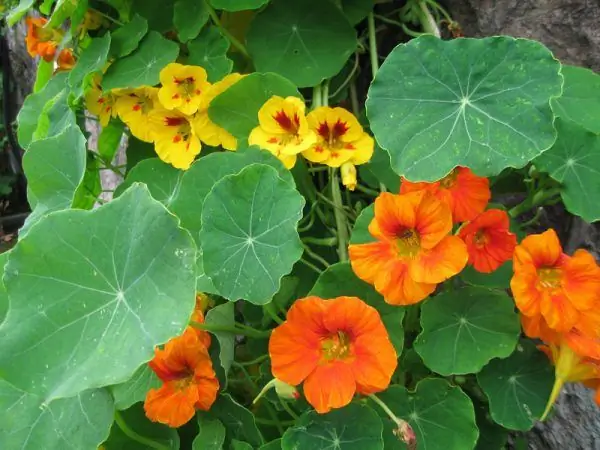
Although nasturtium grows in the shade, it blooms much worse than in the sun
Kobei
Kobeya is a thermophilic vine up to 4 m in height, grown as an annual. She is photophilous, but tolerates light partial shade. Purple flowers appear from July until frost. Sowing seedlings in February - March.
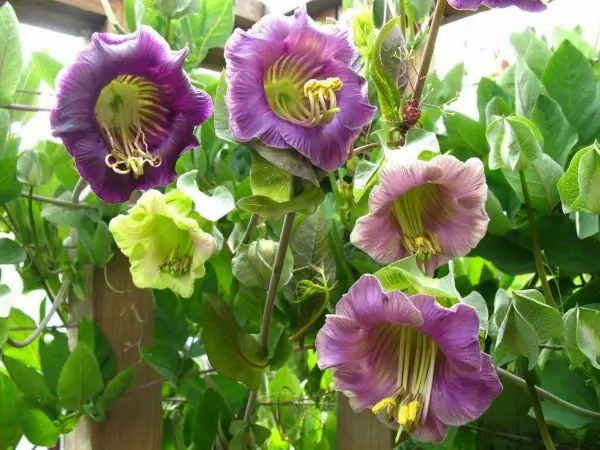
Kobea is a spectacular liana with large bell-shaped flowers
Snapdragon (antirrinum)
Snapdragon prefers the sun, but also tolerates partial shade. Plant height from 15 to 100 cm, depending on the variety. The flowers are white, yellow, pink, red. Bloom from late June to September. Sowing seedlings in March.

Snapdragon can bloom in partial shade
Fragrant mignonette
Nondescript greenish flowers of mignonette are very fragrant. This plant, 20-30 cm tall, loves the sun, but tolerates partial shade. Bloom from July to autumn. Sowing in April for seedlings or in May in open ground.
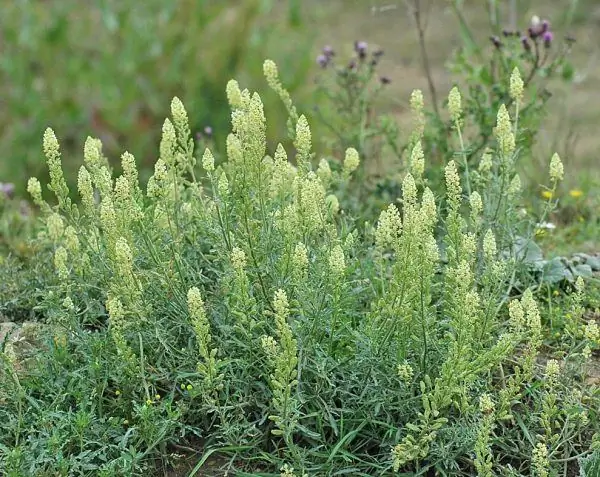
Nondescript greenish flowers of mignonette are very fragrant
Violet pansy
Pansies are the most popular type of violets among flower growers, blooming in the sun and in partial shade. Plant height up to 15-20 cm. Variegated flowers, white, yellow, violet. Sowing seedlings in March, flowering in June.
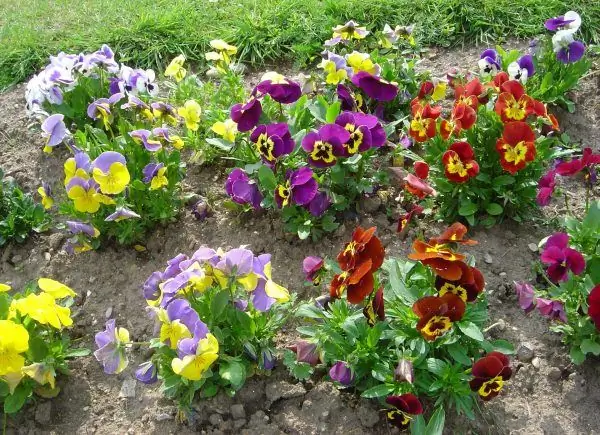
Pansies are a popular variety of colorful-flowered violets
Forget-me-not
Forget-me-not is a shade-tolerant, moisture-loving plant 20-30 cm high with blue, white or pink flowers. For May flowering, seeds are sown for seedlings in November in a cool greenhouse. Plants from self-seeding winter under the snow and bloom in June.

Forget-me-not flowers are blue and pink
Mirabilis
In the south, mirabilis grows as a perennial, in the north it is grown as an annual. Plant height 50-80 cm, flowering from July until frost. Mirabilis prefers light shading, especially in the south. The flowers are white, yellow, red, variegated. Sowing seedlings in March - April.
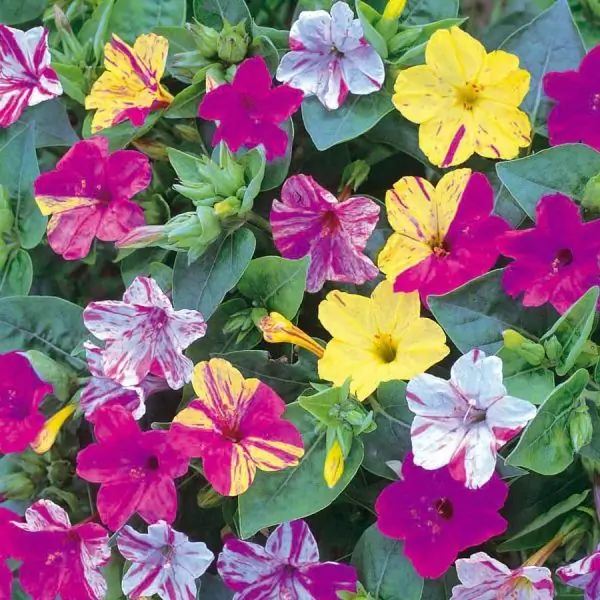
In the south, mirabilis grows like a perennial, in the north it is grown as an annual
Ever-flowering begonia
Ever-flowering begonia is an indoor shade-tolerant perennial, sometimes used as a garden annual. Plant height 15-20 cm. Flowers are red, pink, white. Bloom from June to frost. Sowing seedlings in January.

Ever-flowering begonia is a popular indoor and flower bed plant
I have long abandoned attempts to plant annuals in the shade: they grow there slowly and are very heavily clogged with weeds, especially woodlice. Perennials are much less hassle and are easier to resist weeds.
The correct selection of suitable plant species allows you to create a beautiful flower garden, even in a shaded area of the garden.
Recommended:
What Smell Scares Cats Away: How To Scare Them Away, So As Not To Spoil, With Scents That Animals Do Not Like, Reviews, Video

What place do smells take in the life of cats? What smells repel cats. How to use odors to educate pets: wean shit, gnaw on plants
What Can Be Planted In June In The Country: Plants For The Garden, Vegetable Garden And Flower Garden

Plants suitable for planting in the garden in June are greens, roots, other vegetables, flowers. What can be planted in open ground and in a greenhouse. Gardener's recommendations
Shade-loving Indoor Plants
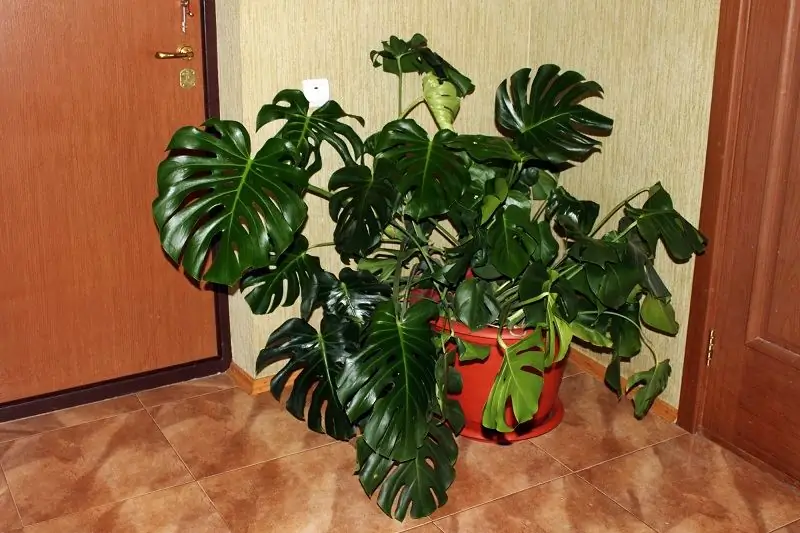
Unpretentious indoor plants that are comfortable in the shade and their main conditions of detention
Plants That Will Yield In The Shade
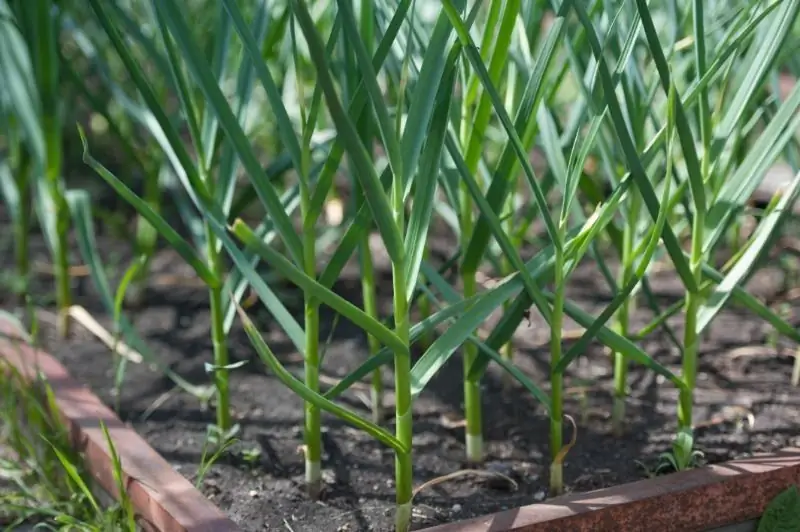
What types of vegetables and greens can be planted in the shade and still get a good harvest
What Red Flowers Can Be Planted In The Garden
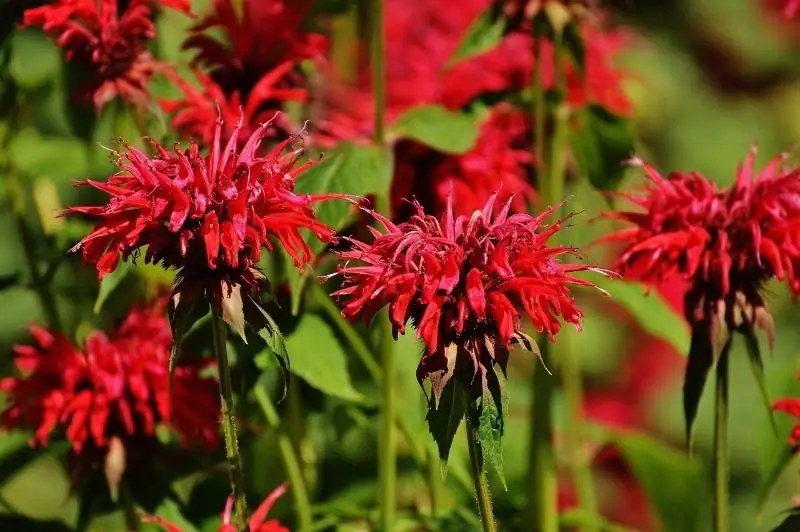
What beautiful red flowers can be planted in the most prominent place of the site
